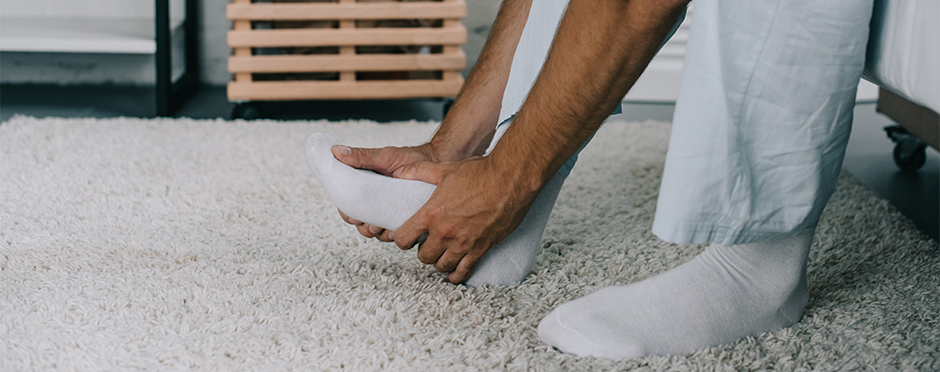
Happy Feet! Tips For Keeping Your Feet Healthy
1 CommentIt’s not uncommon for runners, cyclists and triathletes to have calluses, lost toe nails, pain behind the heel, bunions, and other aches and pains. Feet absorb so much force and can either make these activities comfortable or miserable.
Fortunately, there are some things that can be done to help keep active feet pain-free, including exercises. That said, prior to beginning any exercise program, it is recommended to consult with your physician, physical or occupational therapist to determine which exercises are best for you.
Bunions
With bunions it is helpful to wear a shoe that is supportive. Here are some tips when searching for shoes:
- Look for a shoe with a wider toe box
- Consider not crisscrossing the laces at the top of the shoes to create less pressure on the forefoot
- Try wearing arch/shoe inserts to help support your foot and improve alignment
Wearing toe spacers can also be a game changer over time, as they can help put the big toe in a normal position. The spacers can be worn when sitting down or relaxing, including when sleeping.
Foot Numbness
Sometimes a foot may become numb when biking. Here are a couple of things to consider if this issue arises:
- Numbness down the leg and into the foot could be sciatica
- Try lowering the saddle so the hips stay even through the pedal stroke
- All toes are numb
- If feet are pointed down, adjust the foot plate further back
- Decrease gripping of your toes
- Lessen the tightness of the shoe strap
Back of Heel Pain
Heel pain is often what is known as Achilles tendinitis or tendinosis. Tendinosis means that the condition has become chronic and the collagen has become degenerated due to chronic overuse1. These chronic changes result in a thickened, weak and painful heel. A few helpful tips include:
- Stretch the gastrocnemius muscle
- To do this, perform the straddle stance and keep the back knee straight
- Stretch the soleus muscle
- To do this, perform the straddle stance with the back knee slightly bent while keeping the heel flat on the ground
- Try eccentric calf raises
- In standing position, raise heels up, while keeping knees straight. Lift one foot off the floor, then slowly lower the heel of the foot still on the floor, back to the ground. Hold on to a sturdy support for balance if needed.
- Repeat, but with knees bent
- Perform twice a day: 3 sets of 15 repetitions2
Bottom of Heel Pain
This is likely what is known as plantar fasciitis. Often, this is first felt when taking the first steps in the morning getting out of bed. The foot’s relaxed position is plantarflexion, where the foot is pointed a little down. With walking, the heel first strikes the ground with the foot in dorsiflexion, where the toes a pointing upward. This position creates a stretch to the heel cord and plantar fascia. Some tips to help that can be tried at home include 2,3:
- Stretch the gastrocnemius muscle
- To do this, perform straddle stance and keep the back knee straight
- Stretch the soleus muscle
- To do this, perform the straddle stance with the back knee bent while keeping the heel flat on the ground
- Stretch the plantar fascia
- With the ball of the foot on top of a step, drop your heel down
- Another way to do this is by sitting with the painful foot over the opposite knee. Stabilize the heel with one hand and pull the ball of the foot and big toe back until you feel a comfortable stretching sensation
- Massage the calf
- Often the most tension is in the medial part of the calf
- For help massaging, try rolling a tennis ball, foam roller or rolling pin over the calf
Blisters
The longer the ride or run is, the more blisters that may appear. Blisters are an issue when there is increased friction occurring in one area. As the body responds to the friction, fluid builds up causing pressure and pain in the area being rubbed. When it is a blood blister, the friction has ruptured tiny blood vessels. Tips on preventing blisters include:
- Make sure your shoes are properly fitted
- Keep your feet moisturized
- Wear synthetic socks to help wick moisture away
- Choose a sock that is not loose and a little thicker at the heel and toes
- Try second skin, body glide or Vaseline in areas where you tend to get blisters
Listen to Your Body
With all injuries, it is always important to listen to your body. When the first signs of pain or unusual discomfort appears, stop by one of our Athletico clinics for a complimentary injury screening and ask an endurance specialist to check out your issues. They will help lead you in the right direction. Also, it is important to note that some of our clinics have bike fit specialists, who will make the right adjustments that may help to clear up your injury symptoms. It is recommended to speak with a physician or other health care professional prior to starting an exercise program.
Schedule your free assessment at an Athletico near you!
Click to Schedule a Free Assessment
The Athletico blog is an educational resource written by Athletico employees. Athletico bloggers are licensed professionals who abide by the code of ethics outlined by their respective professional associations. The content published in blog posts represents the opinion of the individual author based on their expertise and experience. The content provided in this blog is for informational purposes only, does not constitute medical advice and should not be relied on for making personal health decisions.
References:
1. Bass, E. Tendinopathy: Why the difference between tendinitis and tendinosis matters. International Journal of Therapeutic Massage and Bodywork. 2012; 5 (1): 14-17.
2. Jonsson P, Alfredson H, Sunding K, Fahlstrom M, Cook J. New regiment for eccentric calf-muscle training in patients with chronic insertional Achilles tendinopathy: results of a pilot study. British Journal of Sports Medicine. 2008 Sep; 42(9): 746-749.
3. Renan-Orline R, Alburquerque-Sendin F, de Souza DPR, Cleland J, and de-lasPenas C. Effectiveness of myofascial trigger point manual therapy combined with a self-stretching protocol for the management of plantar heel pain: a randomized controlled trial. JOSPT. 41(2); 2011: 43-51.
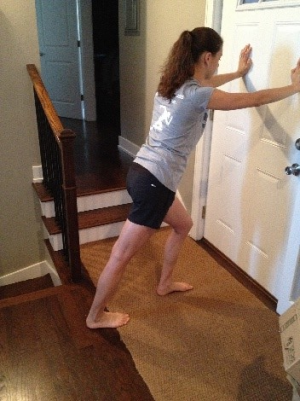
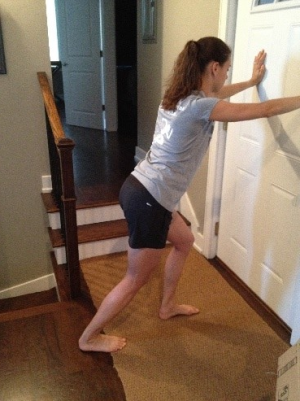
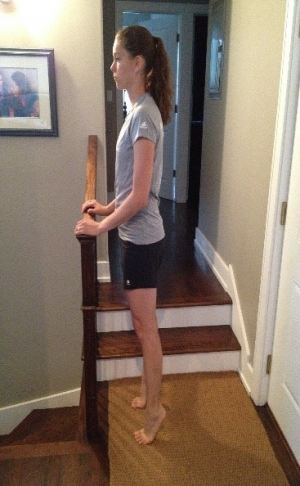
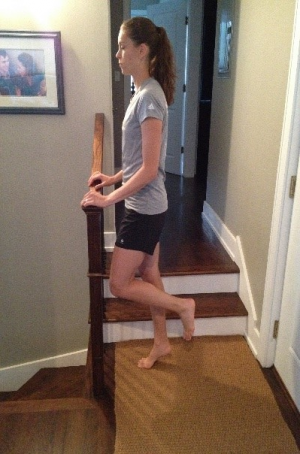
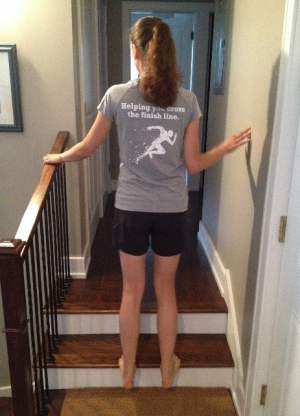
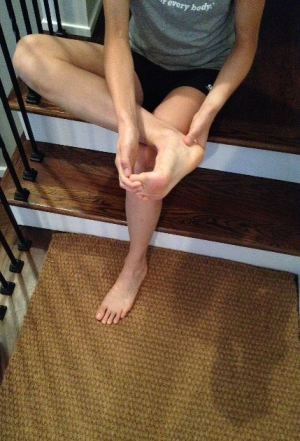

1 Comment
Taylor Hansen
It really helped when you said to have shoes that are properly fitted on your feet. I’ve noticed that my feet are starting to hurt when I take a short walk. I’ll have to see a podiatrist that can help me determine what’s going on with my feet.